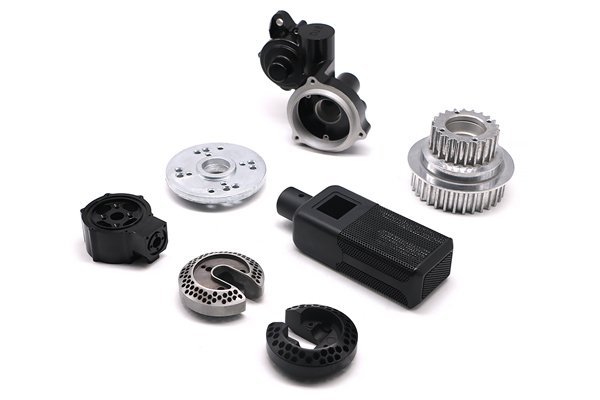Did you know that copper is one of the few metals that can conduct electricity with unmatched efficiency? In fact, copper’s electrical conductivity is used in a variety of applications, from household wiring to advanced aerospace systems. As a material, its malleability and ductility make it ideal for intricate designs and components that require precision. However, to truly leverage the exceptional properties of copper, manufacturers often turn to cutting-edge techniques like CNC turning and milling. But what exactly are these techniques, and how do they benefit the production of copper components? Let’s dive into it.
What Is CNC Turning and Milling?
CNC, or Computer Numerical Control, refers to automation of machine tools that are operated via computers executing pre-programmed sequences of machine control commands. CNC turning and milling are two fundamental types of machining processes that help in shaping materials, including copper, into precise components.
Importance of CNC Machining for Copper Components
Copper components are widely used in various industries due to their unique attributes. However, the effective machining of copper requires specialized techniques. Here’s why CNC turning and milling are vital for producing copper components:
Copper’s conductive properties necessitate the highest degree of accuracy in its components. CNC machining allows manufacturers to achieve tight tolerances that are critical for electrical systems, ensuring the components fit perfectly and maintain efficient conductivity.
The versatility of CNC machinery enables the production of bespoke components tailored to specific requirements. Whether it’s a single prototype or a large batch, CNC machines can easily adapt their operations to create custom copper parts, meeting the unique demands of various applications.
CNC turning and milling are automated processes that reduce human error while increasing production speed. Manufacturers can produce large quantities of copper components in a fraction of the time of traditional machining processes. This efficiency translates into lower costs and faster turnaround times.
The advanced tools used in CNC processes can achieve superior surface finishes that raw copper may not display. A good surface finish not only improves the aesthetic look of the parts but also enhances their performance by reducing friction and wear.
CNC machining minimizes waste by optimizing cutting paths. Unlike manual methods, which can be more haphazard, CNC programs precisely define machining operations, ensuring that leftovers from the copper material are kept to a minimum.
Applications of CNC Machining in Copper Manufacturing
Copper is utilized across various sectors, each of which demands particular types of components. Here are some notable applications where CNC turning and milling techniques play a critical role:
CNC machining is key in producing components like connectors, circuit boards, and cables. As electronics become more compact and complex, the demand for precisely machined copper components also increases.
Sensors, switches, and electrical components in vehicles are often made from copper. The automotive industry relies heavily on CNC machining techniques to ensure these components meet safety and performance standards.
In aerospace applications, copper components must possess both strength and lightweight properties. CNC turning and milling facilitate the creation of various parts, including fittings, brackets, and guidance systems that are critical to flight safety.
Copper pipes and fittings are commonly used in plumbing and HVAC systems due to their durability and corrosion resistance. CNC machining allows for the creation of precision-engineered copper fittings that meet stringent industry standards.

In solar panel designs and wind turbines, copper plays a crucial role in electrical connections. CNC techniques ensure that the components used in renewable energy systems are produced to exact specifications for optimal performance.
Challenges in CNC Machining of Copper
While CNC turning and milling processes offer numerous benefits for copper component manufacturing, challenges remain:
Copper is softer than many other metals, which can lead to rapid tool wear. Manufacturers must constantly monitor tool condition and select specific tools designed for effective machining of copper.
Copper’s excellent thermal conductivity can lead to overheating during prolonged machining processes. Maintaining appropriate feed rates, cutting speeds, and coolant application is essential to mitigate overheating and ensure efficient machining.
CNC machining of copper often results in the formation of small chips that can affect the quality of the finish and overall productivity. Implementing effective chip removal methods is essential to minimize this risk.
Best Practices for CNC Turning and Milling of Copper Components
To overcome the challenges mentioned and optimize the production of copper components, manufacturers can integrate the following best practices:
Using high-speed steel or carbide tools specifically designed for non-ferrous metals will extend tool life and enhance precision. These materials have better wear properties suited for copper machining.
Establishing the right balance of cutting speed, feed rate, and depth of cut is key to achieving high-quality finishes while preventing overheating. Remember, a slower feed can reduce the risk of chip formation and improve surface quality.
Fluid coolant can significantly reduce thermal buildup and improve cutting efficiency. The choice of coolant should consider its properties—soluble oils or synthetic coolants work well for copper machining.
Routine checking of CNC equipment ensures long-term performance. Regular maintenance of cutting tools, CNC machines, and workholding systems can prevent unexpected downtime and improve overall efficiency.
Implementing real-time monitoring systems enables immediate adjustments in machining parameters, assuring the performance of the CNC machine and the quality of the finished products.
CNC turning and milling techniques have revolutionized the manufacturing process for copper components, offering unparalleled precision, customization, and efficiency. As industries increasingly demand higher quality and more complex designs, understanding and leveraging these machining processes will become even more crucial.
Through careful selection of tools, optimization of machining parameters, and adherence to best practices, manufacturers can navigate the challenges posed by copper’s unique properties and harness its full potential. In an age where design intricacies and operational effectiveness dictate success, the conversation around CNC machining is not merely worth considering; it’s essential for competitiveness in the ever-evolving manufacturing landscape.
Remember, optimizing your CNC machining processes is more than just an operational detail; it’s a strategic asset that can elevate your business to new heights. With the right knowledge and understanding, manufacturers can unlock the advantages of CNC turning and milling for copper components, ensuring ongoing success and innovation.






